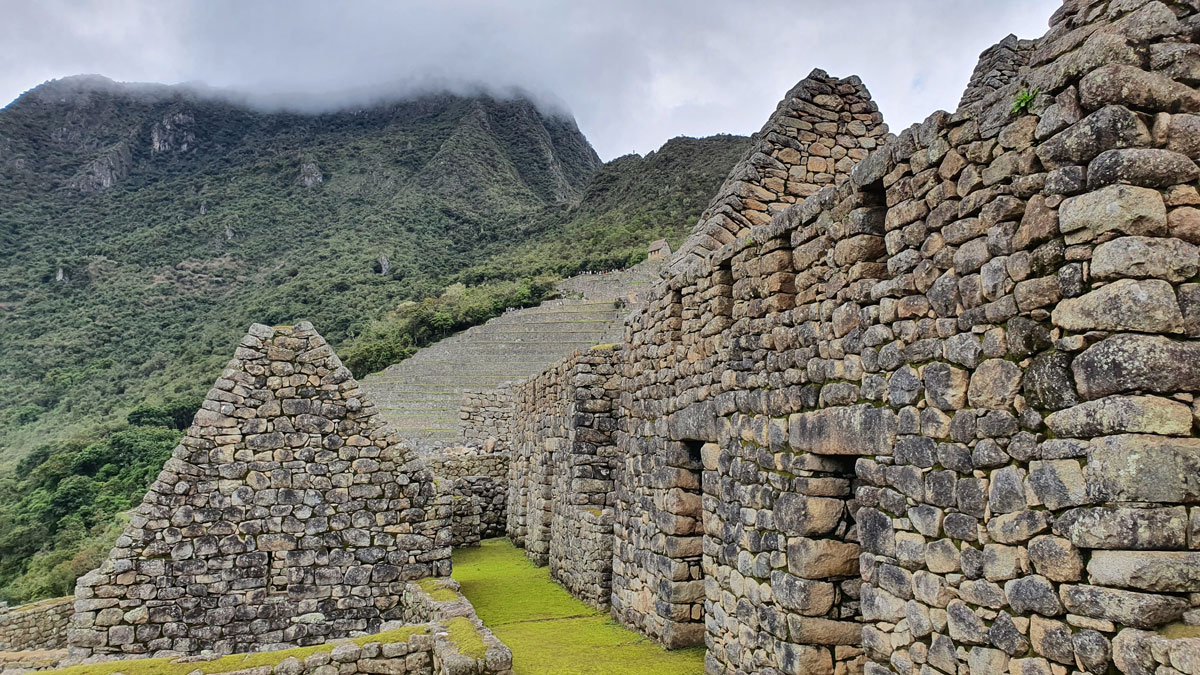
Every year, approximately 25,000 hikers from all over the world hike their extraordinary road built by the Incas, which leads to the impregnable citadel of Machu Picchu located deep in the high jungle of Cusco. The trip begins in the town of Qorihuayrachina, at kilometer 88 of the Quillabamba railway - Cusco and takes 3 to 4 days of strenuous hiking, it is the road that takes tourists to Machu Picchu. The route consists of an impressive variety of altitudes, climates and ecosystems ranging from the Andean plain to the cloud forest.
The Inca Trail to Machu Picchu is 42 kms (26 miles). Campsites along the Inca Trail are assigned by the Ministerio de Cultura and Sernarp and for this reason it is difficult to determine the distance to be covered in a day but expect to walk 6 to 7 hours per day for the first three days and the last day 2 hrs to Machu Picchu.
In case you want a short trek you can choose the 2 day Machu Picchu trek which starts on the Km. 104. In this trek you start on the second day of the Classic one so you will miss the first two days, but as we said before, this trek is for the ones that do not have a lot of time to make the classic one or for the ones that want a short hike.
The Machu Picchu tickets and the Inca Trail permits are sold many months in advance; Therefore, it is advisable to book as soon as possible at least 3 or 4 months in advance, especially if you decide to book in the high season (June, July and August).
The Inca Trail is 43 kilometers long or 26.12 miles long. There are camping sites assigned by the Ministry of Culture that are between 10 and 13 kilometers away from each other, so the daily walking time can vary between 5 to 8 hours per day for the first three days and approximately 2 hours for the last day. The hours of walking and the distance covered may vary according to the physical condition of each walker.
| From | To | Km |
Miles |
| Qoriwayrachina | Kusichaka | 3 | 1,9 |
| Kusichaka | Wayllabamba | 8 | 5 |
| Wayllabamba | Abra de Warmiwañusca | 10 | 6,1 |
| Warmiwañusca | Runturakay | 5 | 3,1 |
| Runturakay | Sayakmarka | 6 | 3,7 |
| Sayakmarca | Phuyupatamarka | 5 | 3,1 |
| Phuyupatamarka | Wiñaywayna | 3 | 1,9 |
| Wiñaywayna | Machu Picchu | 5 | 3,1 |
The Inca Trail is considered an intermediate level walk. Since it does not include rock climbing, or hiking on snow, for which no previous experience is required. The most difficult comes the second day, when we climb a number of stairs and start from 2,000 meters (6,562 feet) to climb to more than 4000 meters (13,123 feet) walking through a small space, later things become more easy as the road continues downhill. Keep in mind that you will carry your personal items, which may include clothing for three days, camera, water, camping equipment, etc.
Not specifically, it is a 4-day challenge walking in a fairly remote area, which has places where one can fall and injure oneself, or even cause one's own death by own carelessness, but if one is prudent and follows the guide's instructions it is Very unlikely to have an accident. On the other hand, it is not a good place to have a medical emergency. If you have a tendency to cardiac arrest, suddenly going into a diabetic coma, epileptic seizures or whatever, check with your doctor before your trip

It is advisable to be fit to perform this type of walk to fully enjoy each moment with the group, since it includes routes of between 6 to 9 hours per day, steep stairs and altitudes of up to 4200 meters, it is possible that even in the first day you think about leaving, but the slightly prolonged breaks will replenish it as you go forward.
Having a standard physical condition better than the average is desirable to perform the Inca Trail. Although it is also important to mention that there are many people who apparently did not meet this average standard but also managed to complete the Inca Trail successfully.
If you suffer from cardiac, respiratory, arterial alterations, pressure, etc, it is important to mention them before making the reservation of the Inca Trail in order to evaluate your participation; If possible, check with your GP. Get more details about the physical preparation for the Inca Trail.
It is advisable to purchase independent travel insurance, in case of any medical or other emergency, in order to ensure maximum peace of mind and satisfaction.
If there are other alternate routes, even if they are different from the Inca Trail, they are no less interesting.
On the day trips, you travel by train and make your way from Aguas Calientes to the paths that lead you through Machu Picchu.
